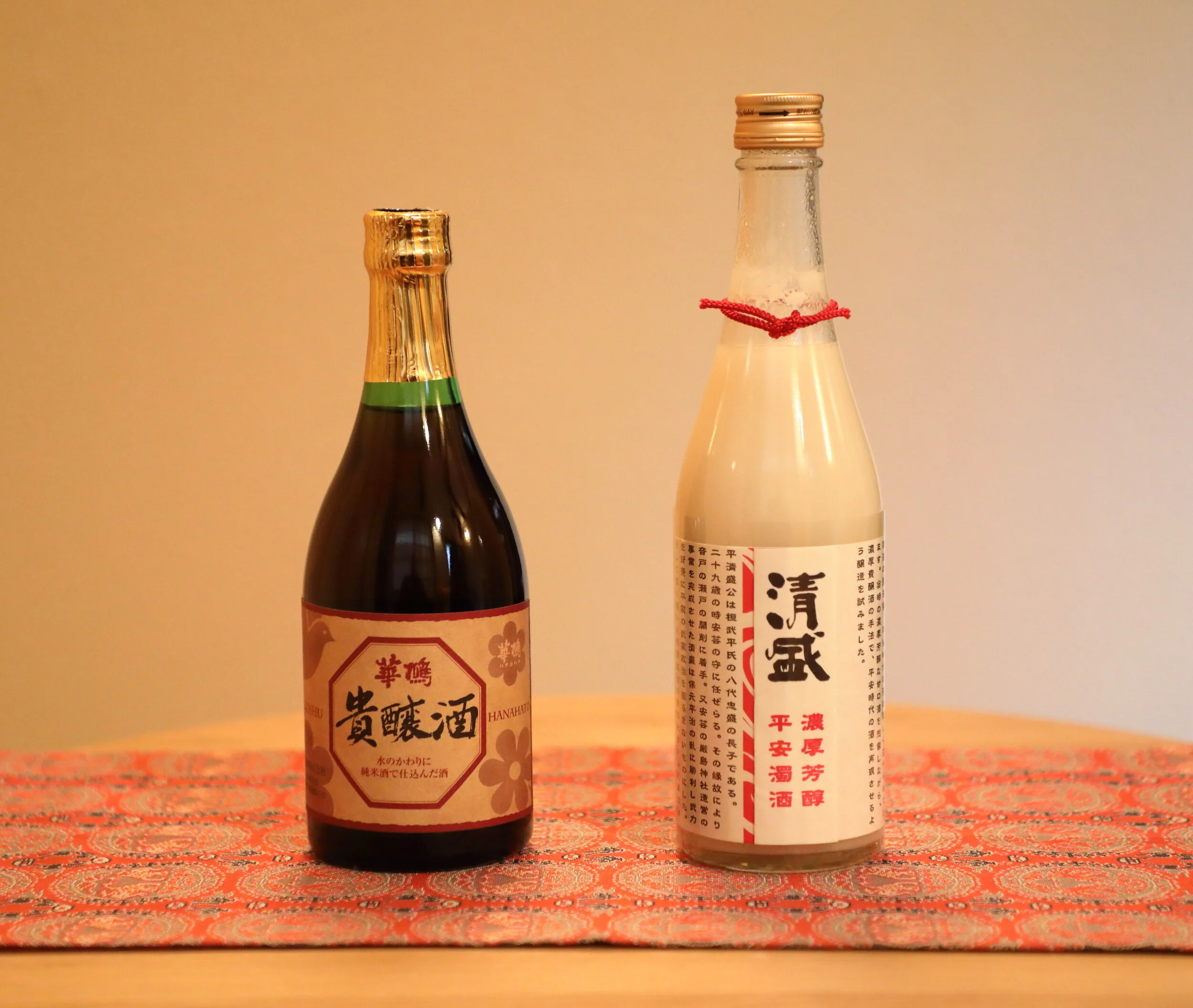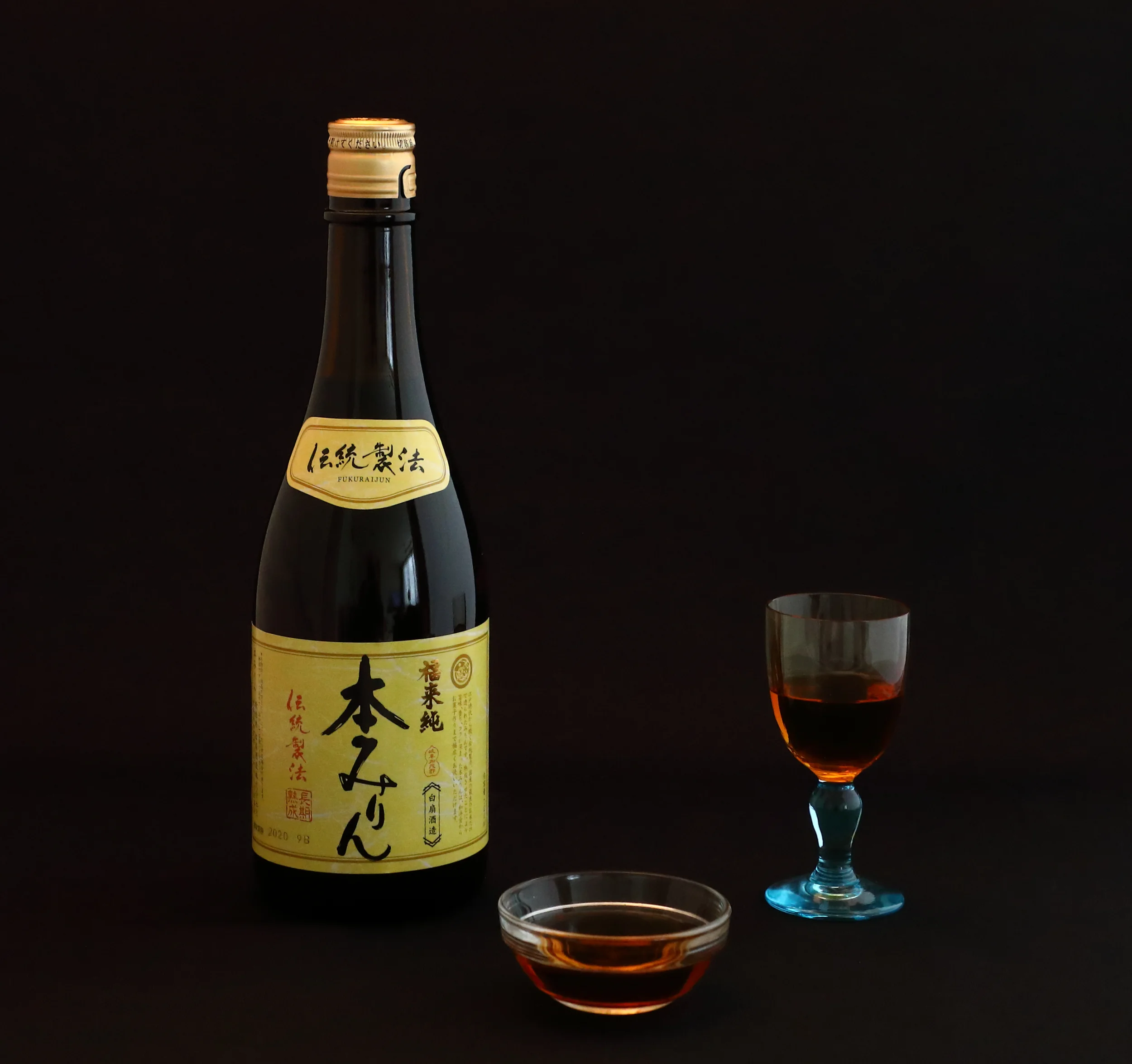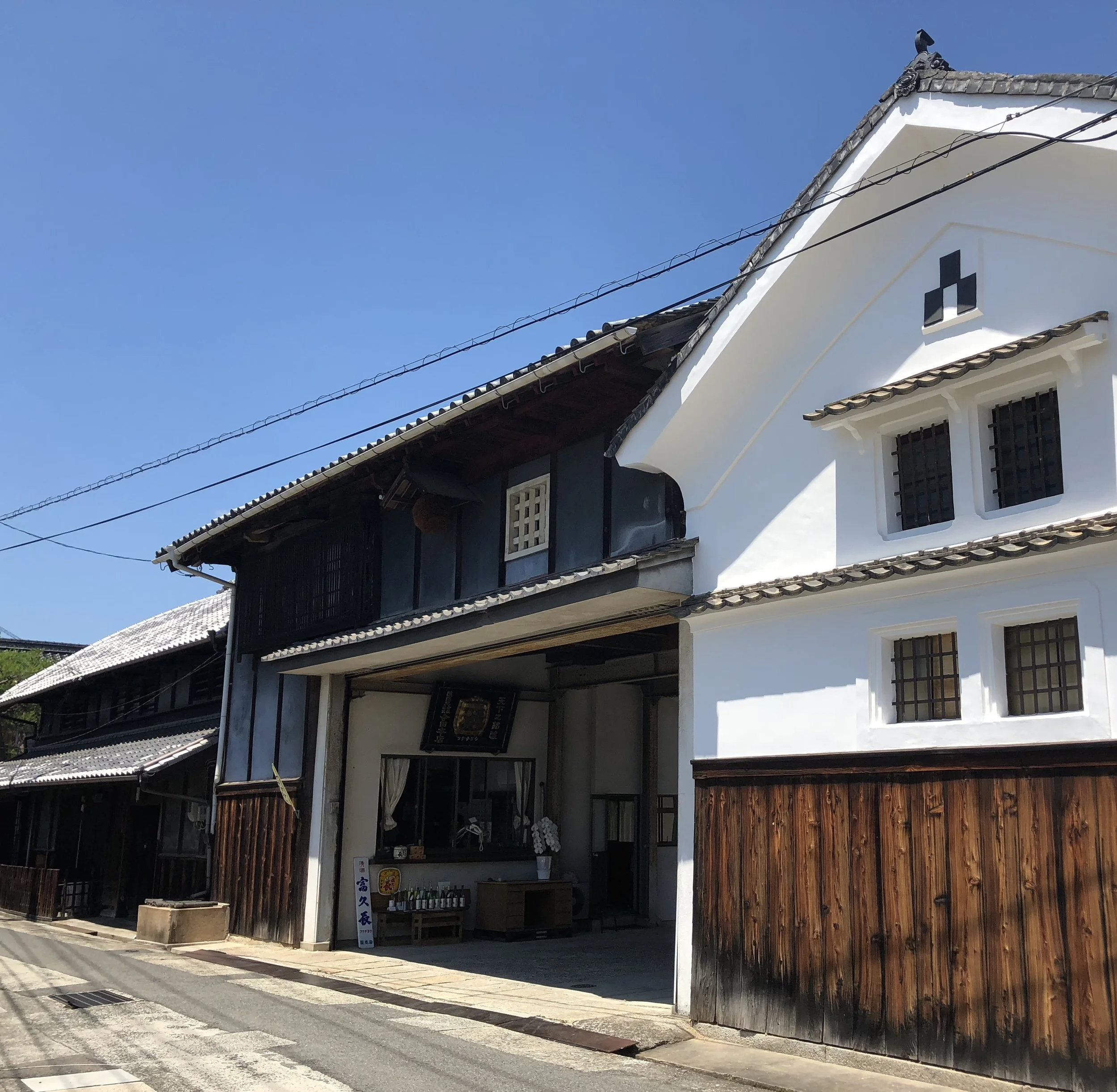Fujii Shuzo's "Ryusei" Sake
Fujii Shuzo’s “Ryusei” brand ginjo and dai-ginjo sake have been winning prestigious awards for over one-hundred years because their uniquely complex, acidic flavor profiles pair well with all foods and cuisines and make them delicious to drink on any occasion.
In 1907, Fujii Shuzo Sake Brewery put Hiroshima prefecture’s new style ginjo sake on the map when its “Ryusei Zenshichi” brand won Japan’s first national sake competition. Located in the historic town of Takehara along the Seto Inland Sea in western Japan, Fujii Shuzo was established in 1863, right about the time that Senzaburo Miura developed the ginjo style of sake in the neighboring town of Akitsu. Ginjo sake was created as a way to make delicious sake using the region’s soft water. The new method required that the rice used be milled down to at least 60% of its original size and then brewed slower and longer than sake traditionally made with hard water. The result was sake with beautiful fragrances and refined flavor profiles. Today, ginjo sake and its even more refined off-spring, dai-ginjo, are probably the best known styles of sake around the world.
Ginjo sake are known for the complexity of their flavors, and those made in Hiroshima prefecture are celebrated for their floral fragrance and sweet, creamy richness. Fujii Shuzo’s sake is particularly complex, in ways that are unexpected. Its fragrance is often described as “odayaka,” which means mild, and in some of its sake there is barely any aroma. And instead of sweetness, there is a pronounced acidity. These characteristics make Fujii Shuzo’s sake refreshing, intriguing, and also very versatile. They can be enjoyed as apertifs, with all kinds of foods, Western dishes included, and are great for cooking, albeit some people might consider this a waste of such good sake.
Fujii Shuzo has continued to win awards over the years, both in Japan and abroad. This reflects its commitment to staying true to traditional methods and its original formula. In 2007, exactly one-hundred years after winning Japan’s sake competition, its “Ryusei Zenshichi” sake won the highest award in the junmai ginjo / junmai dai-ginjo sake category at the International Wine Challenge held in the U.K.
Fujii Shuzo is located in the heart of the historic district of Takehara, in one of the large residence-warehouse type complexes that was characteristic of the homes and businesses of the town’s Edo era (1603-1868) food makers. Its approach to its business is similar to the way it makes sake, honoring tradition while fiting in with today’s modern tastes. The building has been beautifully renovated and includes a soba restaurant where you can taste Fujii Shuzo’s sake along with your meal and also a gift shop (pictured in the title block above) that is hard to leave without buying something because of the attractive, well-priced kitchen and table items on offer. Events like classical Japanese music demonstrations and jazz concerts are also held there.
The brewery is led by fifth generation Yoshifumi Fujii and his son Noriyuki, who is increasingly taking over the operations. Together they continue to brew sake that relies more on nature than process, even while employing the complicated methods for making ginjo sake. The water used to wash, rinse, and steam the rice and brew the sake comes from a spring located deep in the mountains in the village of Tamari behind Takehara. The shubo, the yeast starter that is needed to trigger fermentation, is made by the Edo-era kimoto method. Rice and water are mixed and simply allowed to capture the ambient yeast in the air in the brewery. This creates a more acidic shubo. Last, they only make junmai types of ginjo and dai-ginjo sake, which means their sake does not have additions of distilled alcohol as is done for honjozo types.
Much of the process is done carefully by hand. For example, during the important first step of steaming the rice, they place the rice between layers of fabric in the steamer, so that they do not have to handle it too much, which can damage the rice. They also lay out the steamed rice on traditional bamboo slat racks, where it is inoculated with koji mold and then moved to the muro room for two days to germinate. The resulting koji rice provides enzymes that will help break down the starch in the later additions of rice into sugars that can be fermented.
At the same time, Fuji Shuzo follows many standard practices of making ginjo sake. It mills the rice down to 60% of its original volume or below, which is the benchmark for ginjo and dai-ginjo sake. Some other ginjo sake brewers are milling the rice less and relying more on a longer, slower process to achieve ginjo style characteristics. In addition, Fujii Shuzo generally uses the refined-tasting Yamada-Nishiki rice, which is the standard for many ginjo and dai-ginjo sake.
Compared to many other brewers, Fujii Shuzo produces a more limited, focused line of sake. They all marry the relatively modern ginjo way of making sake with older, more natural techniques, resulting in a variety of sake with Fujii Shuzo’s characteristic flavor profile. In addition to the prize-winning “Ryusei Zenshichi” sake, the main ones are:
“Ryusei Black Label Junmai Dai-Ginjo” — Made with Yamada-Nishiki rice milled to 50% of its original size and using the modern sokujo method for cultivating the shubo, both of which are standards for top quality dai-ginjo sake. It has barely any aroma, which may not inspire sake drinkers who judge sake first by its fragrance. But after tasting this brilliantly clear sake, drinkers are impressed by its sophisticated flavor. It goes well with all foods and can be enjoyed cold or warmed.
“Ryusei Gold Label Junmai Dai-Ginjo” — Made with Yamada-Nishiki rice milled to 50% of its original volume and brewed using shubo made by the kimoto method, making it slightly more acidic than “Ryusei Black Label.” It is considered a celebratory sake in Japan, used to toast and commemorate special occasions.
“Ryusei Bekkaku Junmai Dai-Ginjo” — Made with Yamada-Nishiki rice milled to 40% of its original volume and using the kimoto method to create the shubo. It is both more refined and more acidic than “Ryusei Black Label” and “Ryusei Gold Label” and was specially designed to pair well with all cuisines. It is also the type of sake you can enjoy at the beginning of a meal and continue drinking all the way through. “Ryusei Bekkaku” is included in “The Wonder 500,” a Japanese government-sponsored program that identifies and promotes a select group of “local products that are the pride and joy of Japan.”
“Ryusei White Label Junmai Ginjo” — Made with Yamada-Nishiki rice milled to 60% and using shubo made using the modern sokujo method, this is a standard bearer of the Fujii Shuzo flavor profile.
In recent years, Fujii Shuzo has been also using the local heritage rice Hattan-so and its hybrid Hattan-Nishiki to make a variety of seasonal sake. It is a hard-to-grow rice that produces a more acidic sake. One sake that is available throughout the year is “Ryusei Hoju Banshaku Junmai.” Made with Hattan-Nishiki rice milled less than the others, to only 65% of its volume, it has a more full-bodied flavor, yet is still acidic because it is not pasteurized. The sake’s name translates as “Nighttime Drinking Sake,” which tells you what to do with it. It is also the sake that Fujii Shuzo says is best for cooking.
Story & Photos: Tom Schiller
Fujii Sake Brewery 藤井酒造
3-4-14 Hon-machi, Takehara City, Hiroshima Prefecture 725-0022
Tel: +81 (0856) 22 2029
Web: www.fujiishuzou.com
Currently, Fujii Shuzo is open Friday through Sunday from 8:30 to 17:00. Tanizaki, the soba restaurant located inside the brewery, serves lunch from 11:00 to 14:30.
Getting There
Takehara is surprisingly easy to get to. There are hourly flights from Tokyo's Haneda Airport to Hiroshima Airport, which is located in the hills behind Takehara, and from there it's only a 20-minute ride to the town's center. There are shuttle buses to take you from the airport to Takehara's train station; taxis to any location you want to go to in the city. Or you can take the Sanyo Shinkansen bullet train to the city of Mihara and change to the local Kure Line. Coming from Hiroshima you have the option of the local Kure Line that travels along the coast or highway buses that offer a faster one-hour journey to Takehara. Fujii Shuzo is about a 10-minute walk from the train station.




